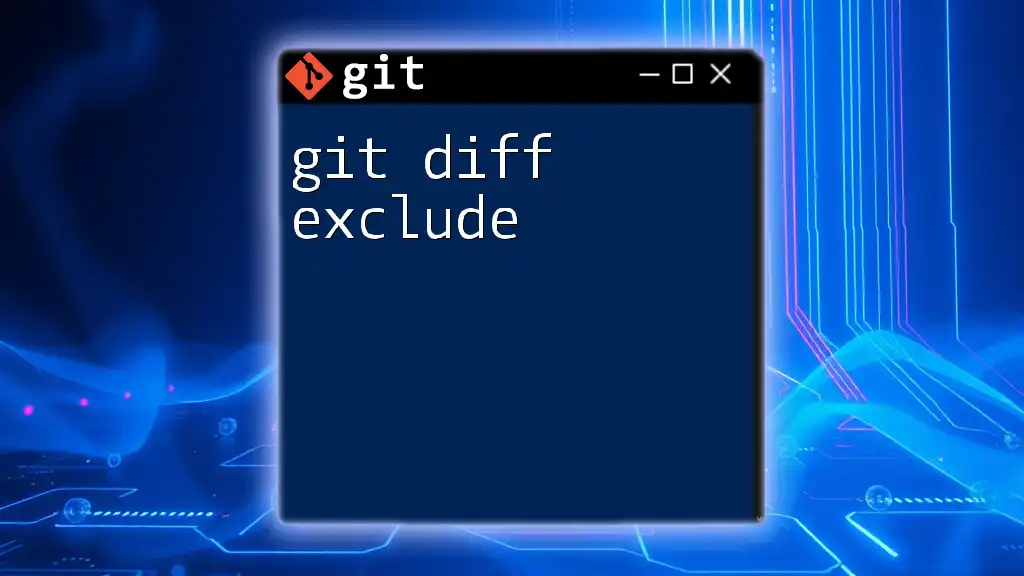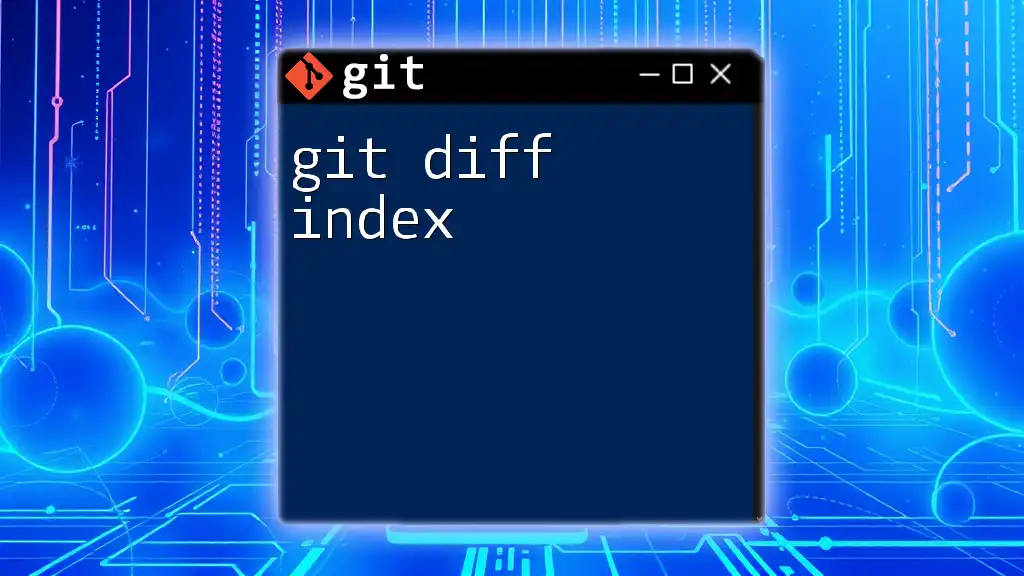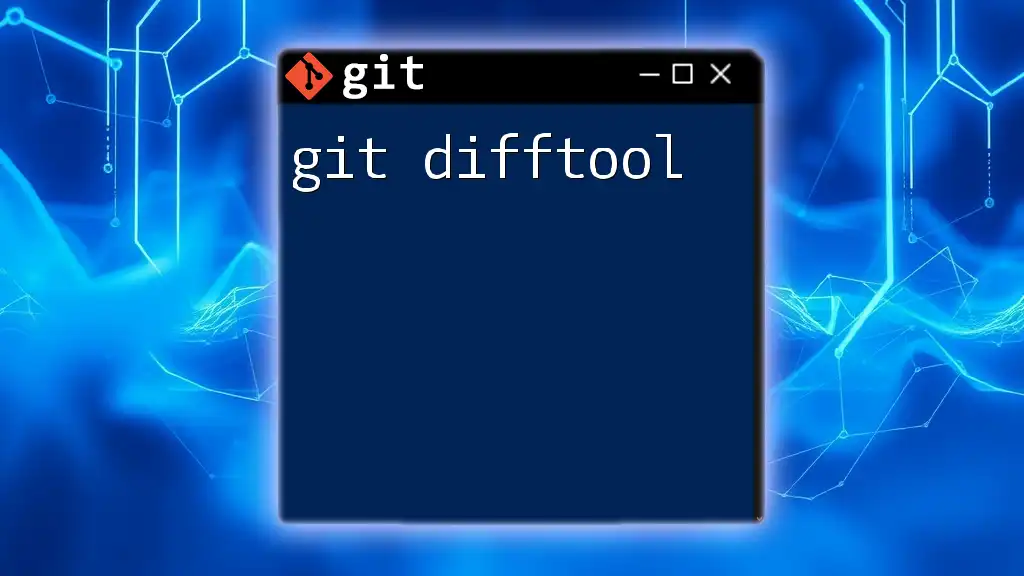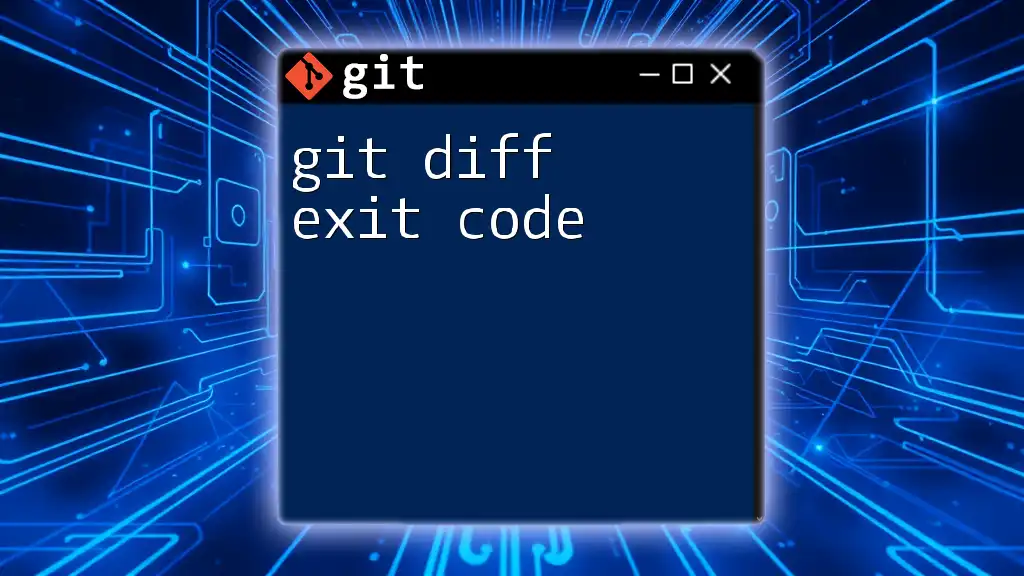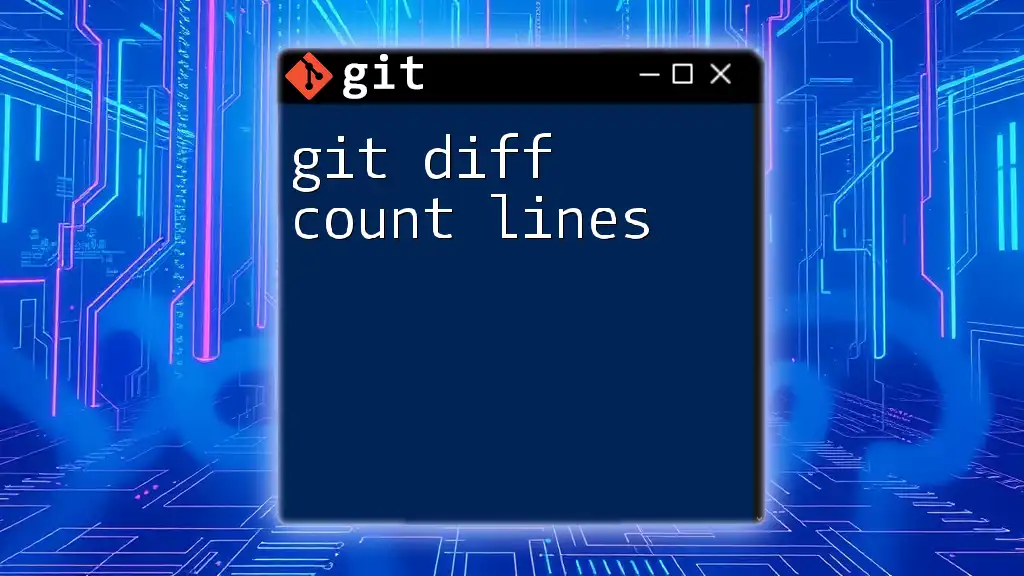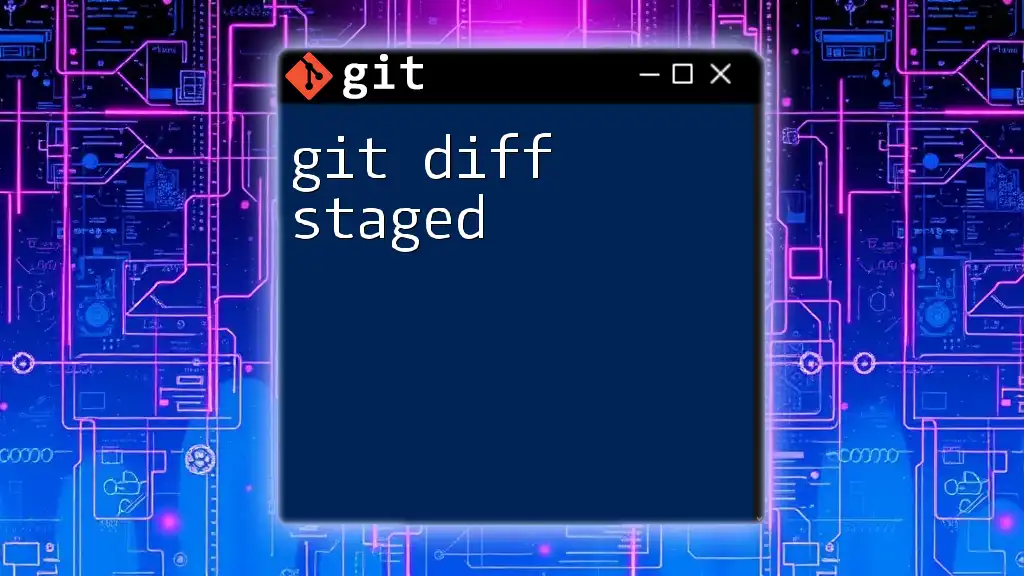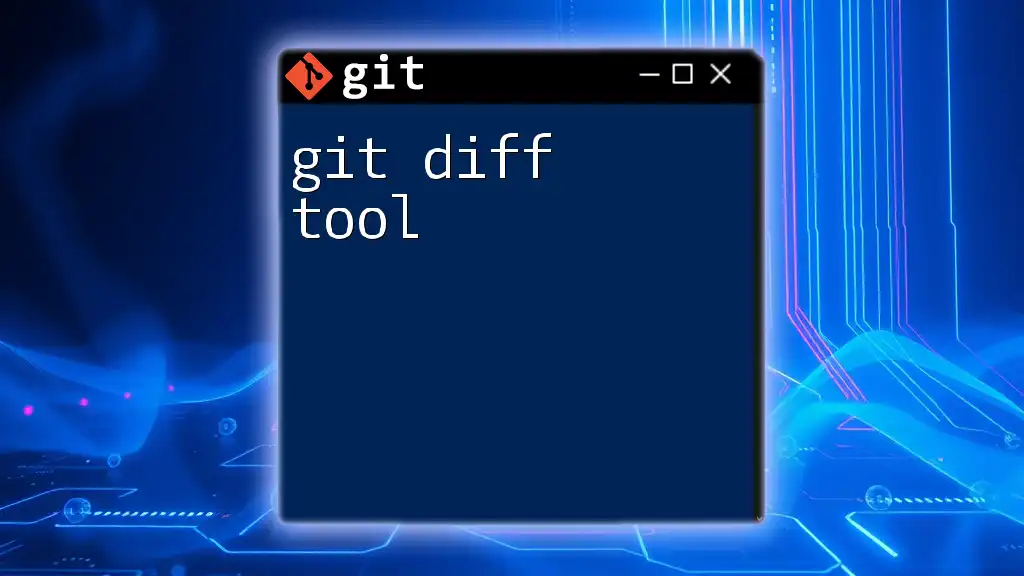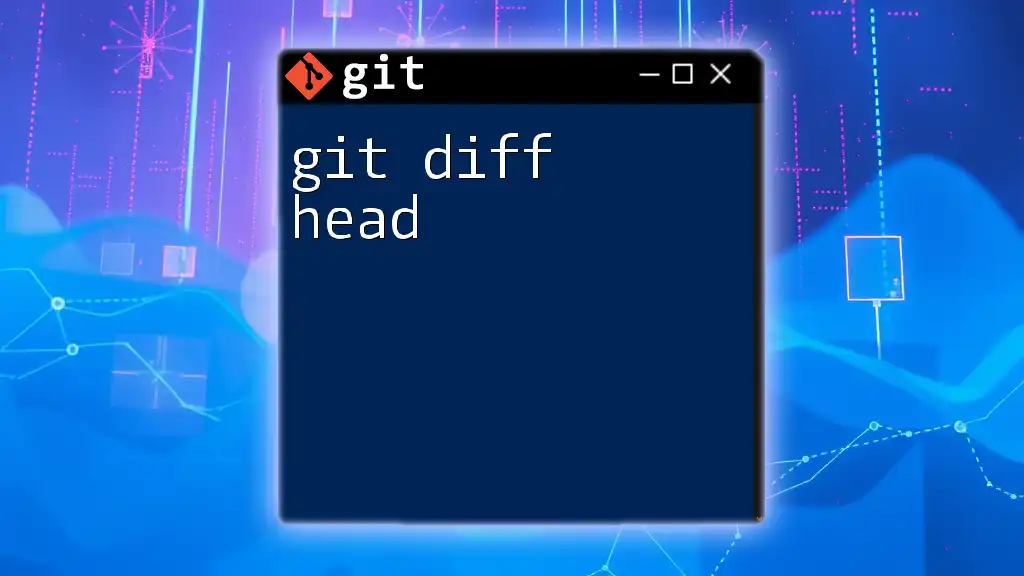The `git diff exclude` command allows you to view the differences between files while excluding specific paths or files from the comparison using the `:(exclude)` syntax.
git diff -- . ':(exclude)path/to/exclude'
Understanding Git Diff
What is Git Diff?
The `git diff` command is a fundamental part of Git that allows users to compare changes in their files and directories. Essentially, it shows the differences between various versions of files and the working directory, helping developers understand what has changed over time. This command is crucial for tracking progress, identifying issues, and collaborating effectively in a team environment.
Basic Syntax of Git Diff
Before diving into exclusions, it's important to grasp the basic syntax of the `git diff` command. The structure is clear and can be broken down as follows:
git diff [OPTIONS] [<commit>]
- OPTIONS: These can be various flags that modify the behavior of the command, such as ignoring whitespace changes.
- <commit>: Specifies the commit to compare against, allowing you to focus on particular points in your repository's history.
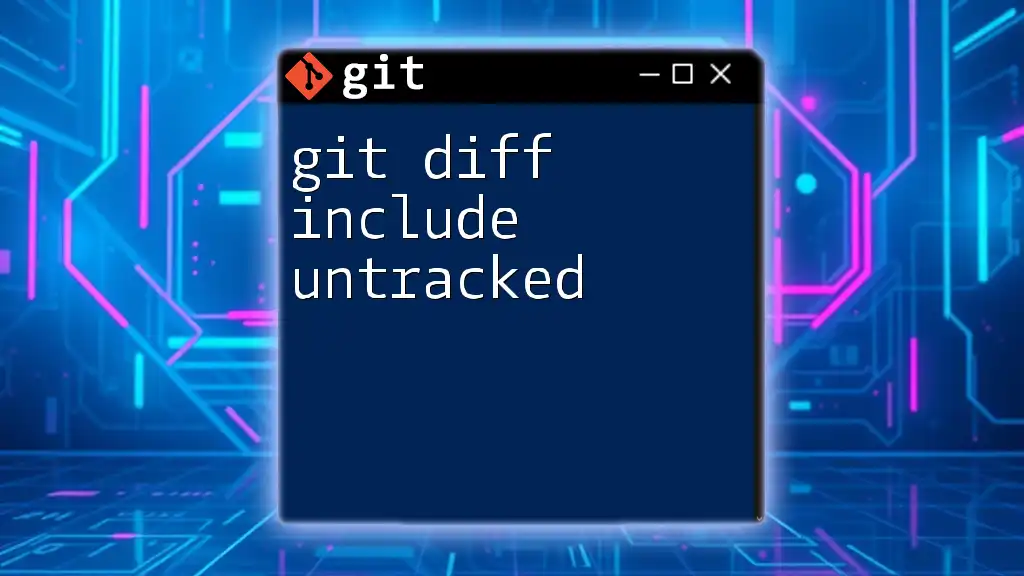
The Need for Exclusion
Why Exclude Changes?
In many cases, you may find yourself interested in specific changes while wanting to exclude others. Excluding changes can keep your diffs cleaner and more relevant, especially when collaborating with others who may be making different modifications simultaneously.
Common Use Cases for Excluding Changes
-
Ignoring Whitespace Changes: Sometimes, formatting changes—like added spaces—can clutter the diff output. Excluding these can help you focus on more significant alterations.
-
Focusing on Specific Files or Directories: If you're only interested in changes to certain files, you can exclude others to keep the output manageable.
-
Excluding Untracked or Ignored Files: When working on large projects, it's common to generate files that aren't part of version control. These can often muddle your diffs and focusing on tracked changes improves clarity.
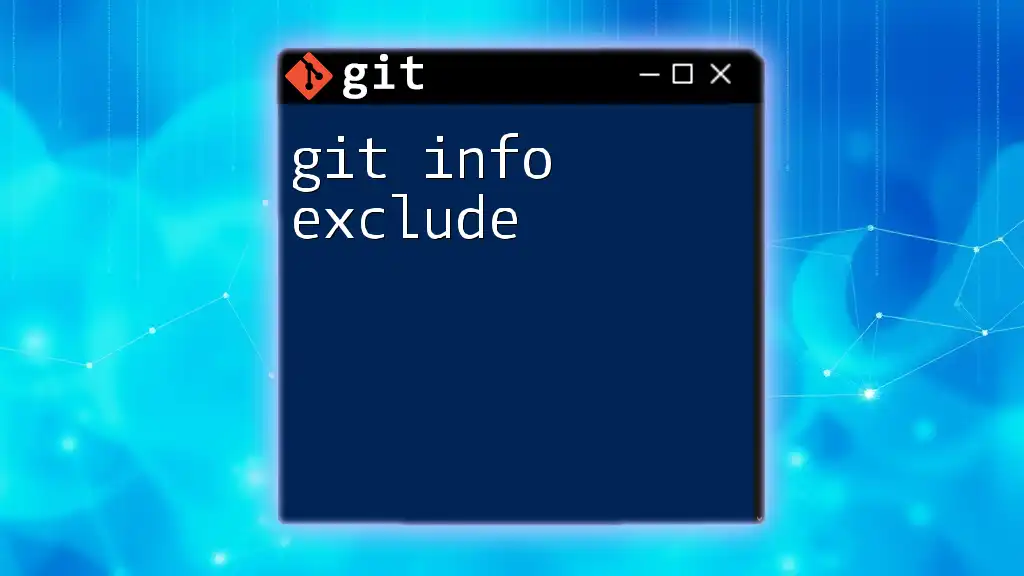
The `--ignore` and `--exclude` Options
Using `--ignore-space-change` and `--ignore-all-space`
The `--ignore-space-change` and `--ignore-all-space` options are useful when you want to focus on the real changes, excluding minor formatting differences.
-
`--ignore-space-change` ignores changes in the amount of whitespace, helping to show essential modifications without distraction.
-
`--ignore-all-space` goes a step further by disregarding both all whitespace and blank lines, allowing you to zoom in on the functional changes.
Example
Here’s how you might use these flags in practice:
git diff --ignore-space-change
git diff --ignore-all-space
Utilizing these options allows you to streamline your diffs and avoid being bogged down by trivial formatting issues.
Using Patterns with Git Diff
Another aspect of exclusion involves using patterns to specify which files should be included or excluded from the diff. This is particularly powerful for managing large sets of changes.
Example
Consider the following commands that show how to exclude certain files based on their extensions:
git diff -- '*.md' # Exclude all markdown files
git diff -- ':!*.log' # Exclude all log files
Using patterns allows for flexible filtering, enabling you to tailor your diff output around your current needs or the complexity of your project.
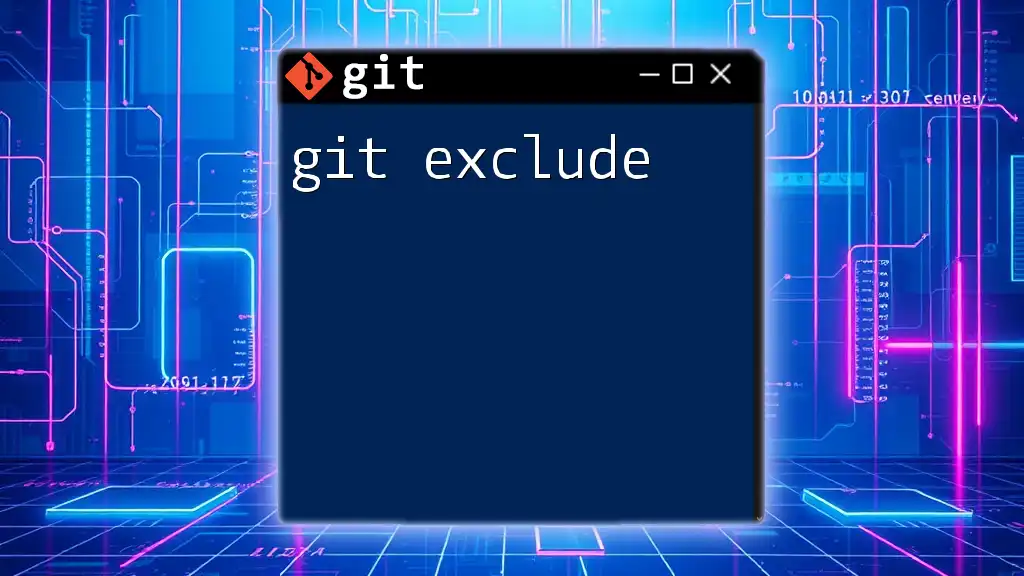
Excluding Specific Files and Directories
Excluding Files with `git diff`
If you need to focus on specific changes without including certain files, you can use the `:!` syntax. This lets you specify files that should not appear in your diff output.
Example
To exclude a particular file, you can use:
git diff HEAD -- ':!file-to-exclude.txt'
This command shows the differences from the last commit while ignoring changes in the specified file, allowing you to have a cleaner view of what's really important.
Excluding Entire Directories
Often, whole directories may not need to be included in your diff outputs, especially if they contain many unimportant files.
Example
To exclude an entire directory from your diff, use:
git diff HEAD -- ':!directory-to-exclude/'
This is particularly useful in large projects where certain assets do not contribute meaningfully to ongoing code development.
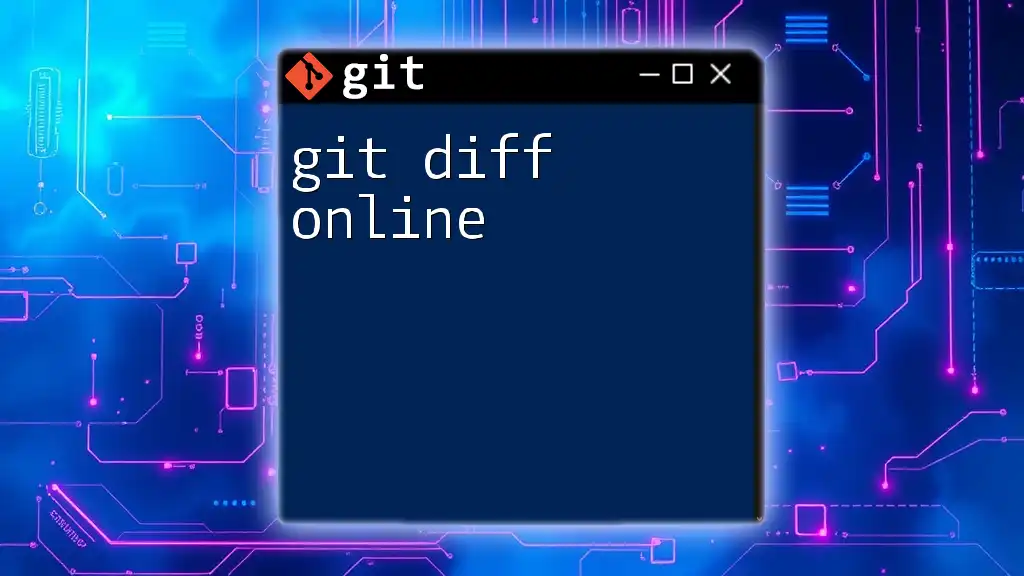
Creating Aliases for Convenience
Why Use Git Aliases?
Git aliases are a fantastic way to create shortcuts for frequently used commands, ultimately streamlining your workflow. With custom aliases, you can enhance your productivity and focus on the tasks that matter.
Creating an Alias for Exclusion
One practical application is creating an alias for exclusions that you commonly use. This not only saves time but also reduces the complexity of your commands.
Example
Creating an alias can be done using:
git config --global alias.diff 'diff --exclude'
You can then simply call this alias in your workflow:
git diff --exclude <pattern>
This approach encourages consistency and speeds up your command execution.
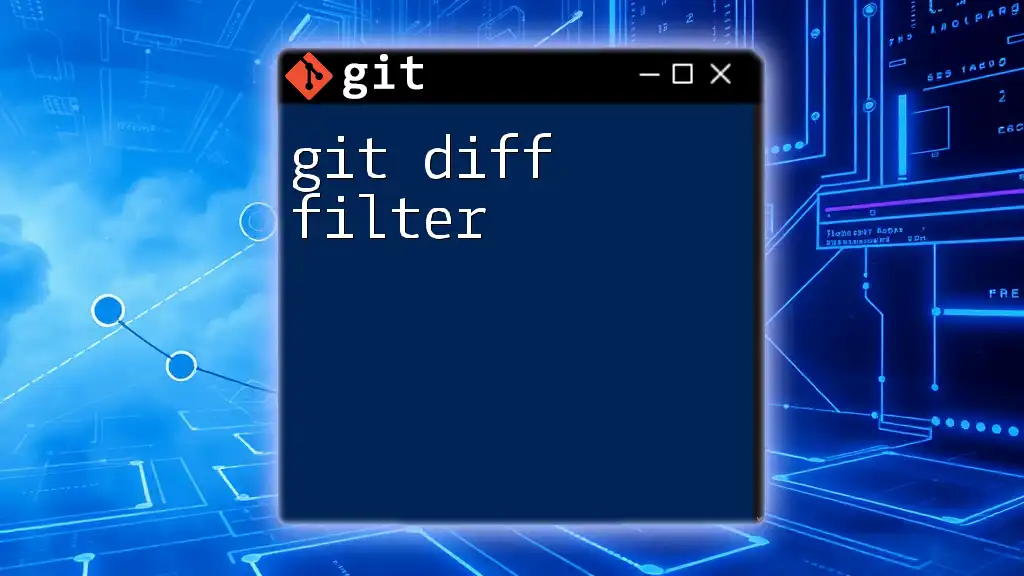
Best Practices for Using `git diff` Exclude
Maintain Clean and Understandable Diffs
One of the fundamental principles when working with `git diff exclude` is to ensure that your diffs remain easy to read and interpret. By excluding extraneous changes, you help yourself and your collaborators see the important alterations more clearly.
Be Aware of the Context
While exclusions simplify your workflow, they can also lead to misinterpretations if not done thoughtfully. Always ensure that the context of your changes is preserved and understood, so no crucial updates are inadvertently overlooked.
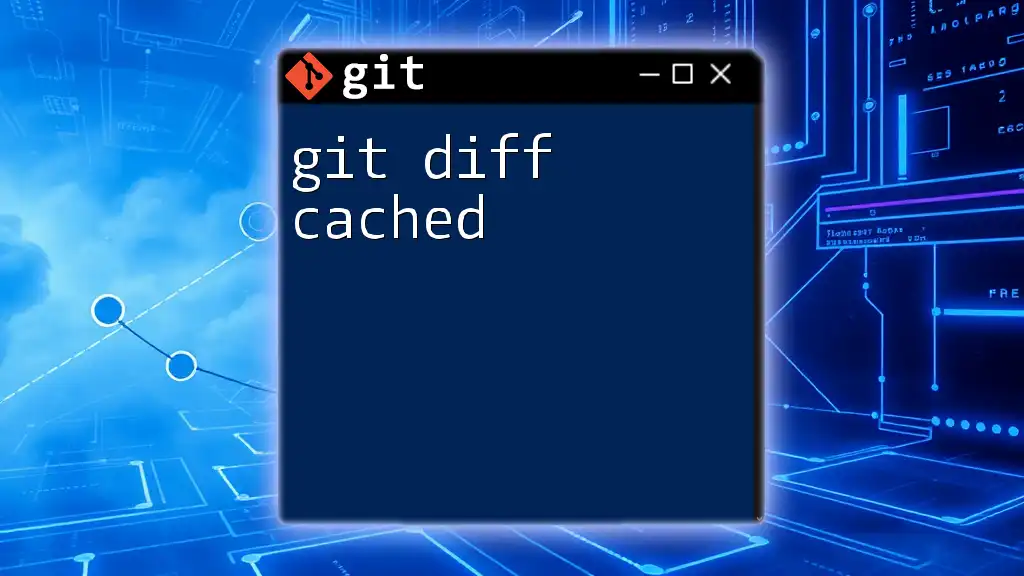
Conclusion
This guide serves as a comprehensive reference to understanding and utilizing `git diff exclude` effectively. By emphasizing how to exclude superfluous changes, focusing on relevant elements, and enhancing your command usage through aliases, you position yourself to work more efficiently within version control systems. Embrace these tools and elevate your collaboration and coding practices, while continuously exploring further optimizations tailored to your workflow.
FAQs about `git diff exclude`
Though not exhaustive, here are some common questions and their answers related to `git diff exclude` that can help solidify your understanding and provide additional insights into its effective usage.

